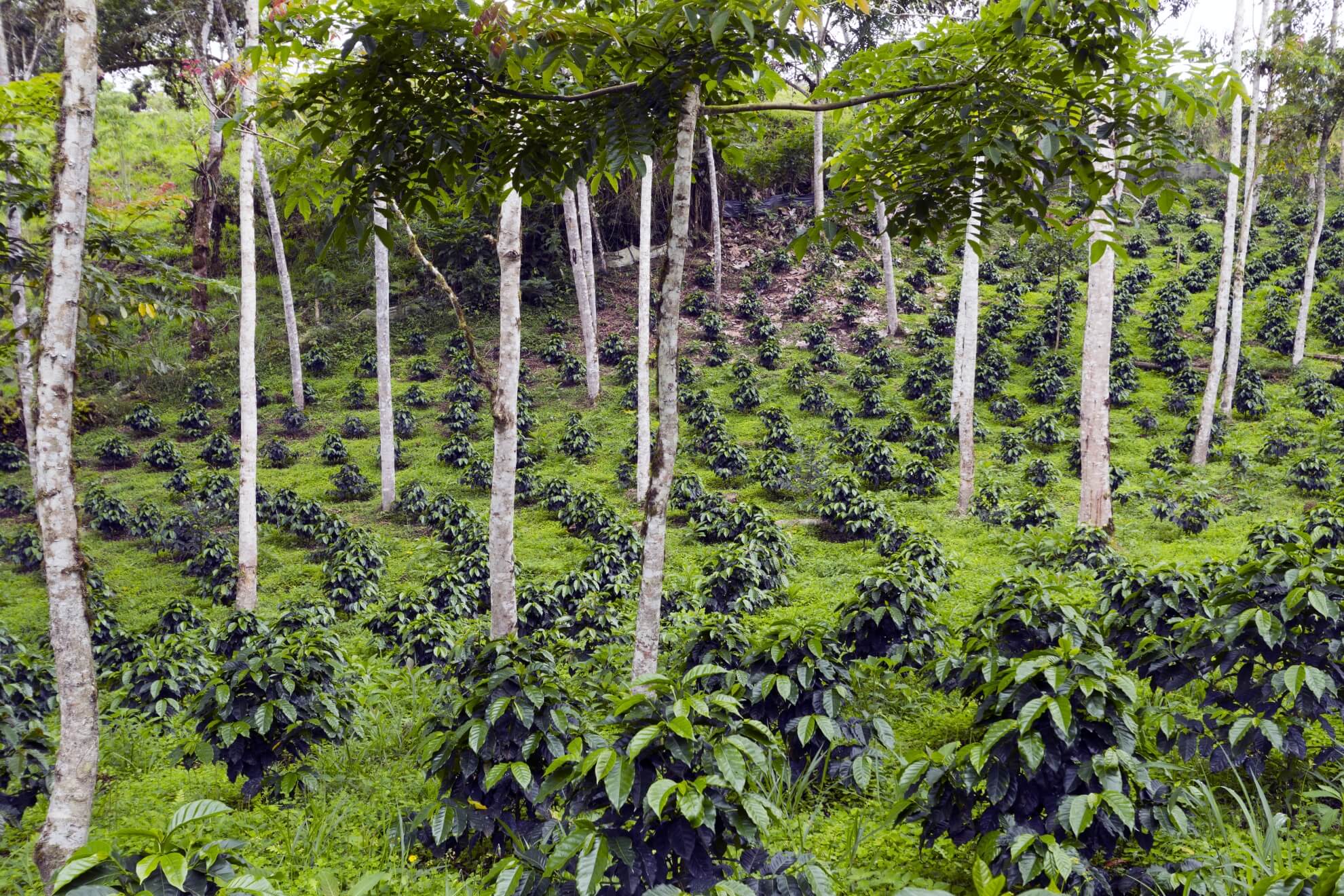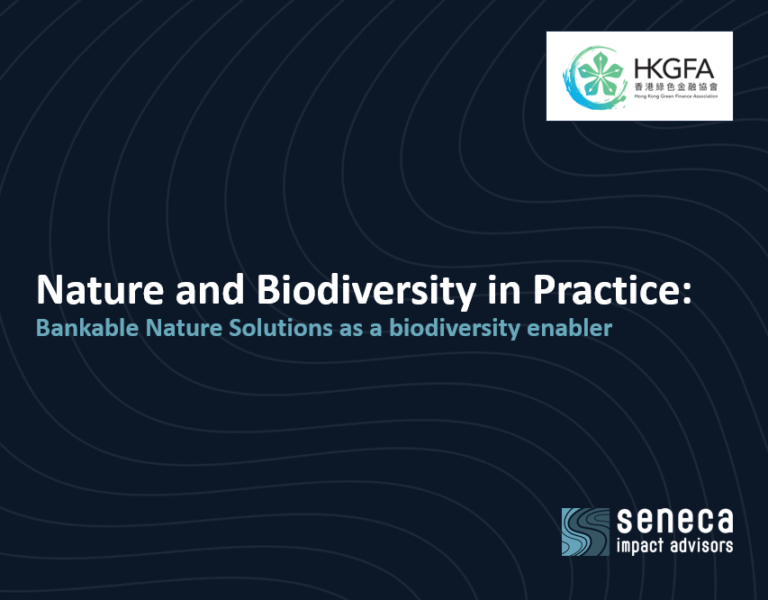Question: What’s a way to save birds, tackle climate change, and make farmers in tropical regions a decent income all at once?
Answer: Shade-grown coffee
You might not realise it while sipping your morning espresso, but coffee naturally occurs in rainforests as an understory shrub, growing in the shade of larger trees. Indeed, for thousands of years, shade-grown coffee agroforestry within a natural forest was the primary means of coffee cultivation, as coffee plants themselves are naturally heat sensitive, with the popular Arabica variety having an optimal growing temperature range of 18 to 23ᵒC.
But in the 1970s, yield-focused government incentives led to the development of more heat-tolerant coffee varieties. As these grew faster and produced higher yields than shade-grown coffee, making them more profitable, many farmers were quick to embrace intensive sun-grown coffee farming, with dire environmental consequences. In Central America alone, over 2.5 million acres of rainforest has been cleared for sun-grown coffee plantations. Sun-grown coffee also requires more fertilisers and pesticides, as the natural mechanisms that provide these services are lost when forests are felled.
Today, sun-grown coffee accounts for over 40% of the world’s coffee. But with a growing awareness of its environmental impacts, shade-grown coffee is increasingly being considered seriously as an alternative means of cultivation. Moreover, through a combination of natural processes and clever marketing, its greater sustainability can even make it economically viable in its own right.
Good Ecosystems, Good Coffee, Good Economics
Much of the profitability of shade-grown coffee stems from ecosystem services that either boost the productivity and quality of the coffee or avert costs for things that farmers would otherwise have to pay for.
The most obvious service is reduced temperatures due to shading by trees. This means that the coffee berries themselves ripen at a slower pace and develop a sweeter taste than their sun-grown counterparts, which are more bitter and astringent. Trees also intercept rainfall, meaning that soil is less easily eroded and can retain nutrients better, while decomposing leaves and nitrogen-fixing plants add further nutrients to the soil, helping farmers to save on fertilisers. Reduced exposure to the sun also means that coffee plants need less water. Additionally, shaded coffee plants have a longer lifespan than sun-grown ones and therefore greater long-term productivity.
When shade-grown coffee farms closely mimic natural forests, they also make excellent wildlife habitats. Birds in particular seem to benefit from them, with studies consistently finding very high densities and diversities of them in shade-grown coffee farms, sometimes exceeding those of natural forests. Insectivorous animals in turn provide free and efficient pest control services and thereby also increase yields, with one 2019 study estimating that a single bird could save 23-65 pounds of coffee per hectare per year.
Interestingly, that same study –which surveyed nearly 150 coffee farms across Latin America– also found that ecosystem services reduced labour, fertiliser and pesticide costs by over US$2000 per hectare, enough to offset losses stemming from the naturally lower yields of shade-grown coffee.

Green Coffee Marketing
Growing coffee in forests doesn’t only boost savings from ecosystem services. Increasingly, it’s also a lucrative marketing point.
In response to growing demands for sustainable agriculture, sourcing sustainable coffee has become a common tactic for coffee companies to boost their environmental credentials with consumers. Often such coffee is bought at a premium from farms accredited with special certification based on their use of ecologically friendly, nature-positive practices, giving farmers a better price and access to specialty markets. While there is no specific certification for shade-grown coffee, many other certifications are awarded to farms with the same practices and environmental benefits.
Take for example the Smithsonian Institution’s ‘Bird Friendly’ coffee, one of the most popular and respected certifications thanks to its stringent standards. To receive this certification, a coffee agroforestry farm must include at least 10 native tree species and have at least 40% shade cover with a minimum average height of 12 metres. Plant species must also vary in height (as in a natural forest) and natural processes (e.g. letting fallen leaves fertilise soil) must be used in the management as much as possible. Finally, farms must be USDA organic certified, meaning that no pests or synthetic fertilisers can be used.
Such coffee has a considerable potential consumer base, despite its premium-inflated selling price. In a survey of 1,300 American birdwatchers, those that also drank coffee were willing to pay an extra US$2 or more for Bird Friendly coffee. Assuming the patterns in this survey hold true for the roughly 45 million birdwatchers in the US, this translates to over 20 million potential customers in one country alone.
Extra Brewing Required
Despite its myriad of environmental and economic benefits, shade-grown coffee production still accounts for just 24% of all the coffee produced globally. Some of this stems from the economic limitations of shade-grown agroforestry; having to share space with other trees means fewer coffee plants per hectare and therefore lower yields. Too much shading can also lead to fungal infections, leading many farmers to go for the more reliably profitable sun-grown coffee and even convert coffee agroforests to full-sun monocultures.
There is also a surprising lack of awareness of shade-grown coffee among the consumers most likely to buy it. Despite the aforementioned willingness of birdwatchers to pay more for Bird Friendly coffee, a separate survey by the Cornell Lab of Ornithology and Virginia Tech University found that only 9% of surveyed birdwatchers purchased it and less than 40% were familiar with it.
Ultimately, for shade-grown coffee to become more prevalent, farmers need more and better incentives for it. According to the 2019 Latin American study, premiums could be a powerful but relatively low-cost means of achieving this. Modelling found that for a premium of just 50 cents per pound of coffee, farmers could achieve maximum profits by allocating 85% of their farm area to shade-grown coffee (up from 36% without the premium). This in turn could encourage more farmers to actively switch from sun-grown to shade-grown coffee.
Of course, with any growing sustainable industry, there is always the danger of greenwashing. In the case of shade-grown coffee, this could take the form of degrading natural forests for conversion to agroforests, or growing coffee under monoculture forests. To reduce the potential for this, stringent certification standards like those of the Smithsonian Institution will be needed to ensure that agroforests closely replicate natural ones, and the best possible environmental practices are followed.
There also needs to be better communications about shade-grown coffee and its benefits to the public to increase awareness and sales of it. This could be achieved through better advertising as well as collaborations between conservation organisations and coffee distributors.
The need to increase the production of shade-grown coffee is all the more important given the threat posed by climate change. Under current projections, large parts of the coffee-growing world are expected become unfit for purpose due to rising temperatures and erratic rainfall, which threaten degrade the quality and economic value of coffee. Being better protected from these climate risks by tree cover, shade-grown coffee could help boost the climate-resilience of the industry as a whole, while creating new agroforests could mitigate the overall climate risk through the creation of new carbon sinks. According to one study, a shade-grown coffee farm with large forest trees could sequester 70-80 tonnes of carbon per hectare, roughly the same amount sequestered by an equivalent area of natural forest. In contrast, a hectare of sun-grown coffee can sequester just 10 tonnes.
The environmental case for shade-grown coffee already speaks for itself. Now, we need to make the economic one do the same. If we can do that, maybe we can avoid a future without a morning latte or cappuccino…or without a habitable planet for that matter.
Author: Seneca Impact Advisors
For more information, please contact impact@senecaimpact.earth






